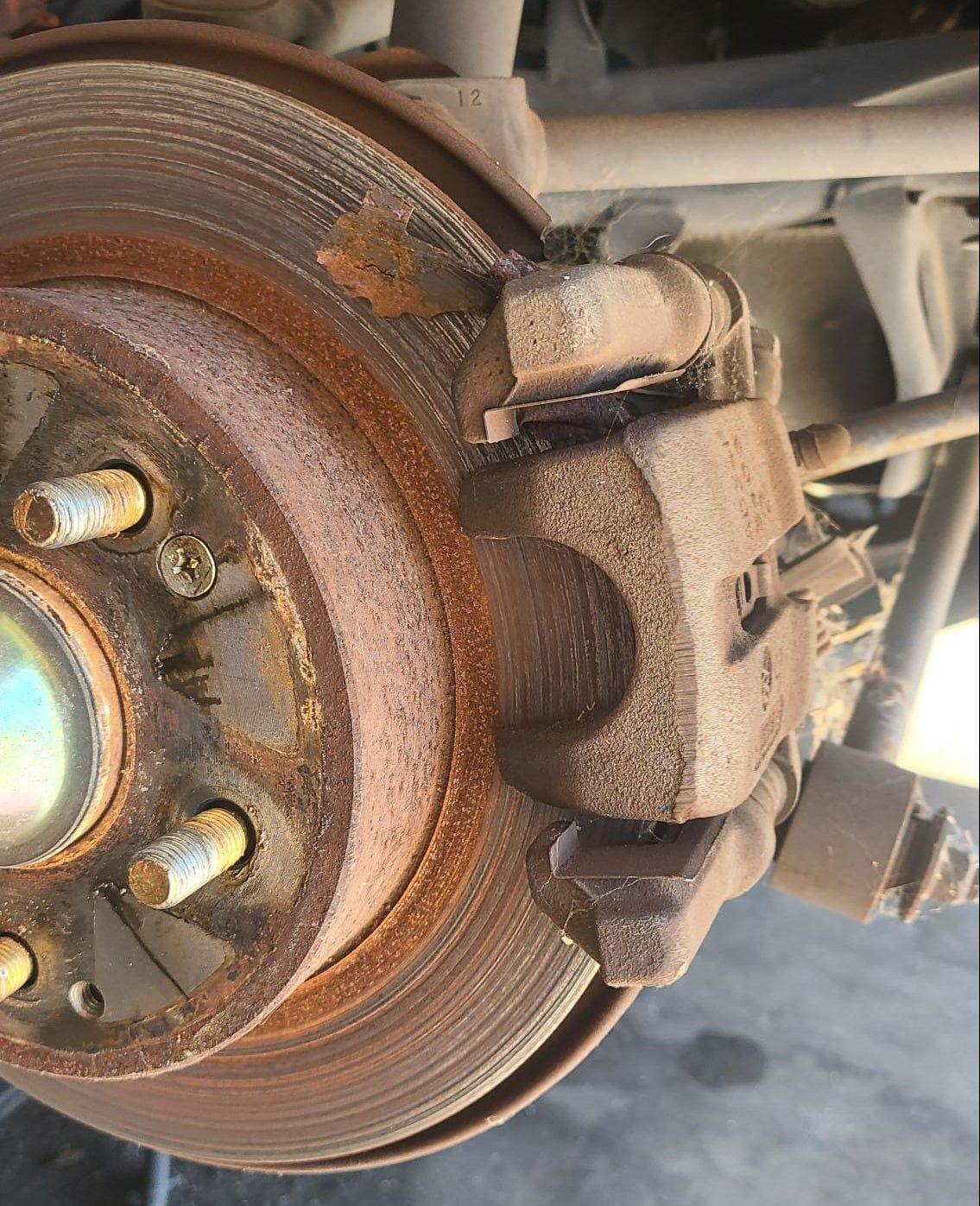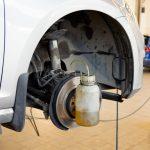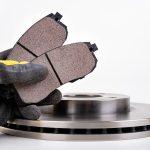
Preventive Measures for Brake System Care
- Harbor Brakes
- December 11, 2023
- Brakes
- brake, brake caliper, brake disc, brake fluid, brake flush, brake maintenance, brake pads, brake repair, brake rotors, brake service, pads, rotors
Proper brake maintenance is crucial for ensuring the longevity and performance of your vehicle, as well as the safety of yourself and others on the road. Regular inspection and maintenance of all brake components is essential. This includes checking and replacing brake pads and rotors, flushing brake fluid, bleeding the brake lines, and upgrading or replacing brake parts when necessary. Additionally, practicing good braking habits and avoiding situations that can negatively impact braking performance will help keep your brakes in optimal condition.
Key Takeaways:
- Regular inspection and maintenance of brake components is necessary for vehicle longevity and safety.
- Check brake pads and rotors regularly for signs of wear and replace when necessary.
- Flush brake fluid every 25,000 miles to prevent corrosion and maintain brake effectiveness.
- Bleed the brake lines every 2-3 years to remove air and ensure proper braking performance.
- Consider upgrading or replacing worn or damaged brake parts for improved braking performance.
Checking Brake Pads and Rotors
When it comes to brake system care, regularly checking and maintaining your brake pads and rotors is of utmost importance. These components play a vital role in the braking system, and keeping them in good condition ensures optimal braking performance and safety on the road.
To start with, it’s essential to inspect the quality and depth of your brake pads on a regular basis. Brake pads wear down over time due to friction, and if they become too thin, it can hinder your vehicle’s ability to stop quickly and effectively. Signs of worn brake pads include a need to depress the brake pedal further than usual or a burning odor when braking.
Inspecting the brake pads can be done at home by removing the tire and visually assessing their condition. If you notice significant wear, it’s time to replace them. Similarly, checking your brake rotors for any signs of damage or uneven wear is crucial. Warped or damaged rotors can lead to vibrations or pulsations when braking, compromising your vehicle’s braking performance.
Remember, your brake pads and rotors work together as a team to bring your vehicle to a safe stop. Regular inspection and prompt replacement when needed will help ensure your brakes are in top shape and capable of delivering the stopping power you need.
If you’re unsure about how to inspect or replace your brake pads and rotors, it’s best to consult a professional mechanic or take your vehicle to an auto shop for a disc brake repair service. They have the expertise and equipment to accurately assess the condition of your brake components and provide the necessary repairs or replacements.
| Signs of Worn Brake Pads | Signs of Damaged Brake Rotors |
|---|---|
|
|
Flushing Brake Fluid
Proper maintenance of your vehicle’s brake system goes beyond just checking and replacing brake pads and rotors. It also involves regularly flushing the brake fluid. Brake fluid plays a crucial role in transferring pressure from the brake pedal to the calipers, allowing your vehicle to stop safely and effectively. Over time, brake fluid can become contaminated with moisture, leading to corrosion and reduced braking performance. That’s why it’s important to include brake fluid flushing as part of your routine brake maintenance.
Experts recommend flushing the brake fluid every 25,000 miles or as recommended by your vehicle’s manufacturer. Flushing the brake fluid involves draining the old fluid and replacing it with fresh fluid. This process helps remove any moisture and contaminants that may have accumulated, ensuring the brake system operates at its best. One way to tell if your brake fluid needs to be flushed is by checking its appearance. If the fluid looks cloudy or milky, it’s a clear indication that a fluid change is needed.
Why is Flushing Brake Fluid Important?
Flushing the brake fluid not only removes moisture and contaminants but also helps maintain the integrity of other brake system components. Moisture in the brake fluid can lead to corrosion, which can damage brake lines, calipers, and other critical parts. By regularly flushing the brake fluid, you can prevent costly repairs and ensure your brakes perform optimally.
Air trapped in the brake lines can reduce the efficacy of the braking system.
While flushing the brake fluid can be done as a DIY project for those with the necessary skills and knowledge, it is recommended to have it done by a professional. An experienced technician will have the expertise and equipment to flush the brake fluid effectively and safely. They can also inspect the system for any signs of wear or damage, providing you with peace of mind knowing your brakes are in good hands.
| Benefits of Flushing Brake Fluid | Ensures proper brake system operation |
|---|---|
| Prevents corrosion and damage to brake components | |
| Eliminates contaminants that can reduce braking performance | |
| Helps maintain the longevity of the brake system |
Bleeding the Brake Lines
Proper maintenance of the brake lines is essential for ensuring the safety and performance of your vehicle’s braking system. Over time, air can become trapped in the brake lines, leading to a spongy brake pedal and reduced braking effectiveness. Bleeding the brake lines is a process that removes this excess air, restoring optimal brake performance.
It is recommended to bleed the brake lines every 2-3 years or as part of a scheduled brake inspection service. This process involves releasing the air trapped in the lines by loosening the bleeder valve while simultaneously applying pressure to the brake pedal. As the air is released, fresh brake fluid replaces it, improving brake responsiveness and pedal feel.
The Importance of Bleeding the Brake Lines
Bleeding the brake lines is crucial for maintaining a firm and consistent brake pedal. Air bubbles in the brake lines can compress, leading to a spongy pedal and delayed braking response. By removing the air from the system, you can ensure that the brake pedal feels solid and responsive when you need to come to a stop.
“Bleeding the brake lines is an important maintenance task that removes excess air from the system.”
It is also important to note that brake fluid is hygroscopic, meaning it absorbs moisture over time. This moisture can cause corrosion within the brake lines and other brake components, compromising their integrity and performance. Regularly bleeding the brake lines helps to prevent this moisture buildup and ensure the longevity of your braking system.
The Bleeding Process
When bleeding the brake lines, it is essential to follow the vehicle manufacturer’s recommended procedure. This typically involves starting with the brake furthest from the master cylinder and gradually working your way towards it. You will need a wrench or socket to loosen the bleeder valve and a container to catch the old brake fluid.
Once the bleeder valve is open, you can press the brake pedal firmly to force the old brake fluid and any trapped air out of the system. It is important to have an assistant help you with this process, as they can close the bleeder valve once the fluid begins to flow consistently. Repeat this process for each brake until you have bled all four corners of the vehicle.
| Benefits of Bleeding the Brake Lines | How Often to Bleed the Brake Lines |
|---|---|
|
|
Upgrading and Replacing Brake Parts
Proper maintenance and timely replacement of brake parts are essential for ensuring optimal braking performance and safety on the road. Upgrading certain brake components can also enhance the longevity and efficiency of your vehicle’s braking system. Let’s explore some key considerations when it comes to upgrading and replacing brake parts.
1. Assess Your Brake System
Before deciding on any upgrades or replacements, it’s important to assess your brake system’s current condition. Inspect the brake pads, rotors, calipers, and other components for signs of wear or damage. If you notice uneven brake pad wear, vibration during braking, or reduced stopping power, it may be time to consider an upgrade or replacement.
Tip: Regularly inspect your brake parts during routine maintenance to catch any issues early on.
2. Upgrading Brake Pads and Rotors
One of the most common brake upgrades is installing high-performance brake pads and rotors. These upgraded components often have better heat dissipation capabilities, improved friction materials, and enhanced stopping power. They can provide a more consistent and responsive braking experience, especially during high-performance driving or heavy towing.
When selecting upgraded brake pads and rotors, consider your driving habits and vehicle’s weight. If you frequently engage in spirited driving or have a heavier vehicle, opt for performance-oriented options. However, if you primarily commute in normal city conditions, a standard upgrade may suffice.
3. Specialty Brake Parts
In addition to upgrading the brake pads and rotors, you may also consider specialty brake parts for specific needs or preferences. For example, slotted or drilled brake rotors can offer improved heat dissipation and reduce the risk of brake fade during prolonged or intense braking. Ceramic brake pads are another option that provides quieter operation, reduced dust, and longer pad life.
Remember: Specialty brake parts may have specific maintenance requirements or limitations, so be sure to follow the manufacturer’s recommendations.
4. Consult with a Professional
While some brake upgrades can be done at home, it’s always advisable to consult with a professional mechanic or brake specialist. They can help you select the right components based on your vehicle’s specifications and driving needs. Additionally, professionals can ensure proper installation and provide any necessary adjustments for optimal performance.
By upgrading and replacing brake parts as needed, you can maintain the reliability and safety of your vehicle’s braking system. Whether it’s choosing high-performance brake pads, upgrading to specialty components, or seeking professional advice, investing in your brakes will pay off in the long run.
| Upgrade Option | Benefits | Considerations |
|---|---|---|
| High-performance brake pads and rotors | – Improved heat dissipation – Enhanced stopping power – Consistent braking performance |
– Higher cost – Possible increase in brake noise and dust – May require more frequent maintenance |
| Slotted or drilled brake rotors | – Improved heat dissipation – Reduced risk of brake fade – Enhanced wet weather braking performance |
– May increase brake noise – Potential for increased brake pad wear – Higher initial cost |
| Ceramic brake pads | – Quieter operation – Reduced dust – Longer pad life |
– Higher cost – May have reduced initial “bite” compared to standard pads – May require longer warm-up time |
Conclusion
Proper brake maintenance is crucial for safe driving and the longevity of your vehicle. By regularly inspecting and maintaining all brake components, including pads, rotors, fluid, and lines, you can ensure optimal brake performance. This will not only keep you and your passengers safe on the road but also prevent costly repairs in the long run.
Remember to follow the recommended maintenance schedule and address any issues promptly. Regular inspections and replacements of worn or damaged brake parts will help maintain the effectiveness of your braking system. By taking care of your brakes, you can enjoy reliable journeys and peace of mind.
Additionally, practicing good braking habits and avoiding situations that can negatively impact brake performance is essential. Maintain a safe following distance, brake gently and gradually, and avoid abrupt stops whenever possible. These simple steps will help prolong the life of your brakes and ensure your safety on the road.
FAQ
How often should I inspect my brake pads and rotors?
It is recommended to inspect your brake pads and rotors regularly, at least once every six months or whenever you notice signs of wear, such as a burning odor or the need to depress the brake pedal further.
How can I check the quality and depth of my brake pads?
You can check the quality and depth of your brake pads by removing the tire and visually inspecting them. If the pads appear worn or if you notice any unevenness, it may be time to replace them.
How often should I replace my brake fluid?
Brake fluid should be replaced every 25,000 miles or as recommended by the vehicle manufacturer. If you notice cloudy or milky brake fluid, it is a sign that it needs to be replaced.
Why is bleeding the brake lines important?
Bleeding the brake lines removes excess air from the system, ensuring proper brake performance. It is recommended to bleed the brake lines every 2-3 years or as part of a scheduled brake inspection service.
When should I consider upgrading or replacing brake parts?
You should consider upgrading or replacing brake parts if they are worn, damaged, or if you want to improve the longevity and performance of your braking system. Higher performance or specialized parts can be installed for better results.
Source Links
- https://www.actiongatortire.com/5-keys-brake-maintenance/
- https://www.beefedupbrakes.com/59537-2/
- https://barrysautobody.com/brake-system-maintenance-tips/


